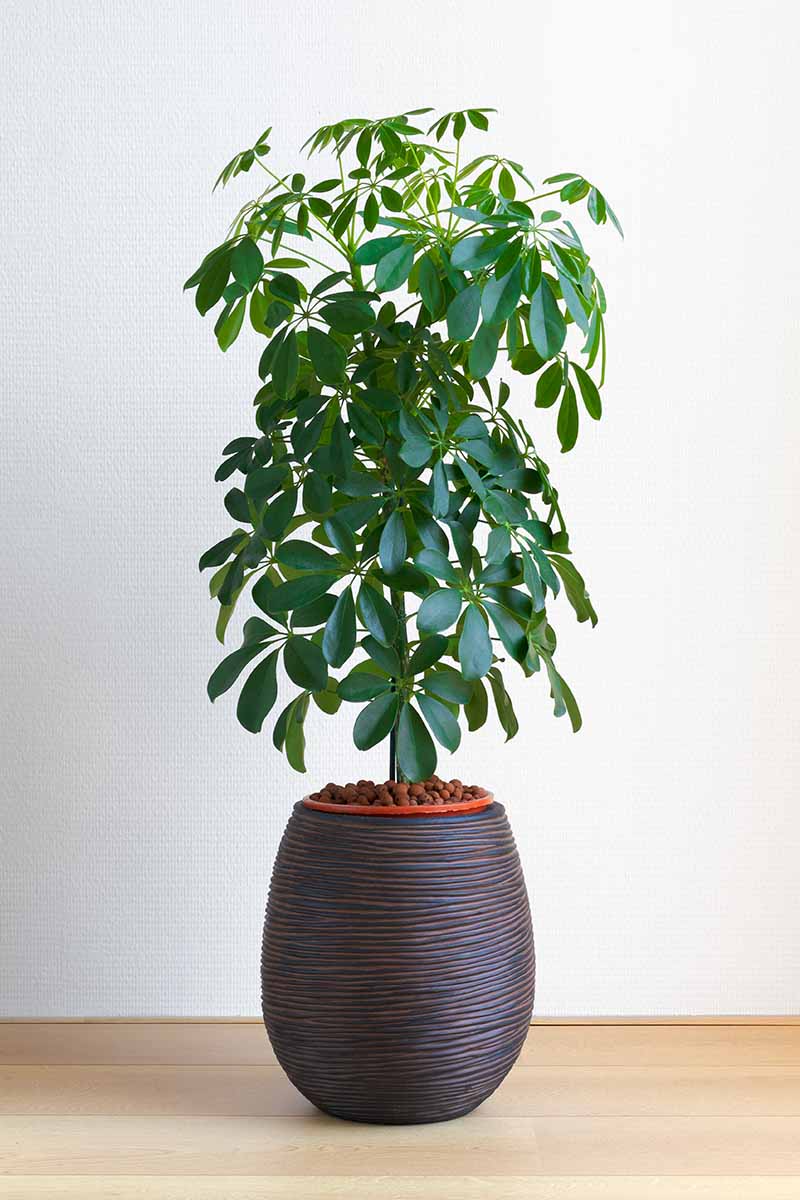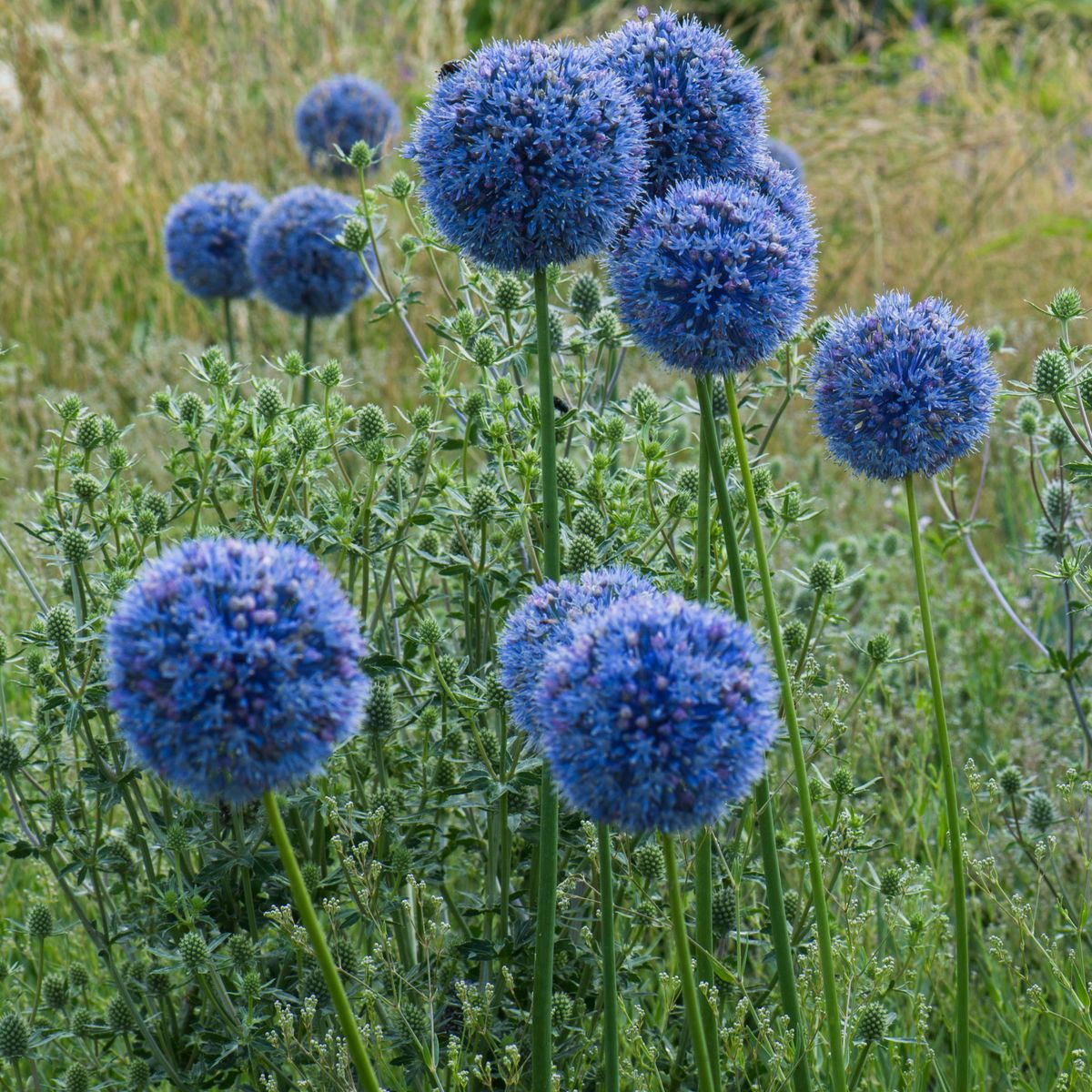I adore my umbrella plant, the groupings of umbrella-like leaves always catch my eye as I walk through my house.
Part of what I love about them, beyond the fabulous foliage, is that they need little maintenance.
Schefflera species have been reclassified into the Heptapleurum genus, but most of us still refer to them as “schefflera,” and you’ll commonly find them listed this way at plant nurseries and garden centers.

We link to vendors to help you find relevant products. If you buy from one of our links, we may earn a commission.
If you want to learn more about how to care for umbrella trees, check out our guide.
In this guide, we’re going to cover when and how to prune your scheff – sorry, Heptapleurum plants!
It’s not difficult, a little bit of trimming now and then to provide the shape you want and to remove any damaged branches, and you can basically sit back and enjoy them.
Still, just because umbrella trees aren’t demanding, it doesn’t mean they never require some attention. Specimens that become leggy, misshapen, have broken branches, some thin areas, or just need a little opening up will benefit from a little pruning.
Here are the topics we’re going to cover to help you make your umbrella tree look its best:
The best time to prune specimens grown as houseplants is in the spring or summer.
Prune in spring or fall for outdoor umbrella trees. Make all your cuts right above a leaf bud or a branch using a clean pair of pruners.

It’s vital to clean your tools before you use them, or you run the risk of spreading disease. Wipe your tools down with one part bleach to nine parts water (a 10 percent bleach solution).
You might want to wear gloves, since umbrella trees will ooze sap that contains oxalate crystals, which can irritate some people’s skin.
But before you make your first cut, let’s talk about growth habits.
Schefflera Growth Habits
Umbrella plants are woody shrubs, though we often grow them in tree-like forms in our yards and gardens. As shrubs, they naturally put out multiple branches and trunks.
A large shrub can be cut back dramatically because it has a robust root system from which to send out new growth. Smaller specimens need more judicious treatment, as they can’t recover as easily from a serious prune.

Some houseplant specimens are sold already trained into a tree-like habit. These will need to be cared for a bit differently since they don’t send out lots of stems to work with.
There are two species commonly grown as houseplants: H. actinophylla and H. arboricola. Both have the same growth habit, they just differ in how large they grow, with H. arboricola remaining much smaller.
The umbrella tree will send out new branches at the nearest node to anywhere you make a cut.
Keeping this in mind can help you make your cuts to encourage growth where you want it.
How to Prune
Before you start cutting, inspect your umbrella plant carefully. Are there any overgrown areas? Branches that are much longer than all the others? Do you like the shape? Is there any evidence of damage or disease?
To prune your schefflera, start by removing any branches that are dead, dying, diseased, or deformed. Then, take off any branches that are rubbing against each other or crossing.

Once those are removed, you can provide some shape to the specimen by pruning off any extra long branches or removing a little on one side if it’s looking unbalanced.
Be sure to rotate the pot or walk around your specimen and look at it from all angles. It’s amazing how quickly a schefflera can grow lopsided or crooked.
As I mentioned earlier, you should make the cut either at the nearest stem or just above a leaf bud. Wherever you make the cut, new branches will sprout.
So anywhere that the umbrella tree is looking a bit thin can be gently pruned to encourage branching. The goal isn’t to take off the length but to cut the branch to encourage new growth.
For a younger specimen, you can take off a third of the leaves and up to half in the case of older, more established specimens.
Topping
Umbrella trees can also be “topped,” a method where you remove all of the foliage from the top of the main trunk, and the plant will respond by sending out more branches just below where you cut.
Not all species can do this, and it’s a handy technique if you want to reduce the height of a specimen.

I had a 20-year-old schefflera bonsai that grew a bit too tall and leggy over the years, so I made the tough decision to prune the trunk down by two-thirds.
It took a few months, but eventually, new branches appeared from the area where I cut, and it eventually looked better than ever.
It takes a leap of faith and some patience, but you don’t have to live with a houseplant that has a shape that you don’t love.
If your schefflera is looking leggy and bare, you can top it to encourage bushier growth lower down on the plant. To do this, choose a spot at the height you’d like to encourage growth.
Try not to cut off more than half of the plant at a time, though if you don’t mind taking the risk of potentially losing your specimen, you can prune even more severely.

Make the cut just above a branch or leaf node. You can then propagate a new plant from the top that you removed by placing it in in potting medium, or just toss it.
If you choose to propagate it, place the cutting in potting medium in its own pot and keep it in a spot with bright, indirect light. Keep the medium moist.
Keep your topped umbrella tree in its usual location and slightly reduce the amount of water you provide.
The umbrella tree won’t be able to take up as much water as it used to now that it has fewer leaves. Don’t fertilize while you’re waiting for the new growth to develop.
Once new branches emerge and start to grow, you can return to your typical care routine.
Pruning Outdoor Plants
Outdoor specimens can be pruned a lot more aggressively than those kept indoors.
Instead of shearing the plant, make judicious cuts, but feel free to prune hard if you need to. Make the cuts in front of a leaf bud to encourage branching.

You can prune back by over half if you need to reshape a plant, though you shouldn’t do this every year.
In the years in between heavy prunings, just provide shape and remove those four Ds: dead, diseased, deformed, or dying branches.
Give ‘Em the Chop
Umbrella trees can be aggressive growers. Once they become established, you turn your back, and the next thing you know, you have a towering shrub taking over the room.
Pruning is your friend! By trimming, you can change the shape of your plant, making it shorter, bushier, thinner, or whatever you want.

What are your pruning goals? Are you wanting to provide some shape? Remove some damaged branches? Fill us in on your plans in the comments section below.
And if you’re looking for information about how to prune a few other houseplants, we’ve got you covered with these guides:











